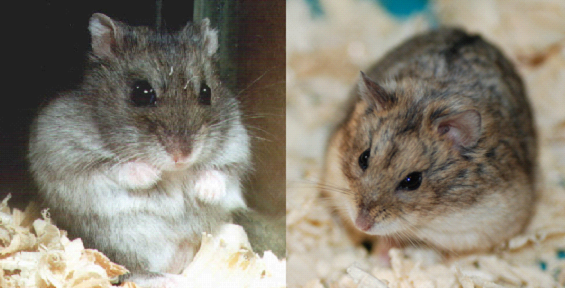
Scientists from the Institute of Ecology and Evolution of the Russian Academy of Sciences and the Faculty of Biology of Moscow State University conducted a pioneering study on the inheritance of the structure of ultrasonic calls in interspecific hybrids.
Until now, it was known that when closely related species with very different sound signals hybridize, in hybrid individuals the sounds produced by phonation - vibrations of the vocal cords - have a structure intermediate between the two parental forms. However, the question of the inheritance of ultrasonic calls, which are whistles based on air turbulence, remained a blank spot.
A description of ultrasounds was carried out in the young of laboratory lines of the Campbell hamster from the eastern (Mongolian line) and western (Kosh-Agach line) parts of the range, the Djungarian hamster, as well as hybrids between male Djungarian hamsters and female Kosh-Agach Campbell hamsters (Fig. 1). A total of 4,000 sounds were analyzed from 80 pups aged 4-8 days in the “isolation test”.
All groups studied produced two categories of ultrasonic signals: low frequency, centered around 41 kHz, and high frequency, centered around 60 kHz, but in different percentages.
Low- and high-frequency components could be present in the calls, either individually or together, forming ultrasound with two frequencies. Interestingly, when comparing different lines of Campbell’s hamster, it was found that there were more ultrasonic calls with a high-frequency component in the pups of the Mongolian line, and calls with two components in the pups of the Kosh-Agach line. In terms of the composition of calls, the hybrids did not show expected intermediate values between the parent species, but demonstrated signals with their own characteristics - ultrasounds with a low-frequency component were less common in them than in Campbell's hamsters, ultrasounds with a high-frequency component were less common than in Djungarian hamsters.
Ultrasounds with two components were represented more often in hybrids than in both parental species (Fig. 2).
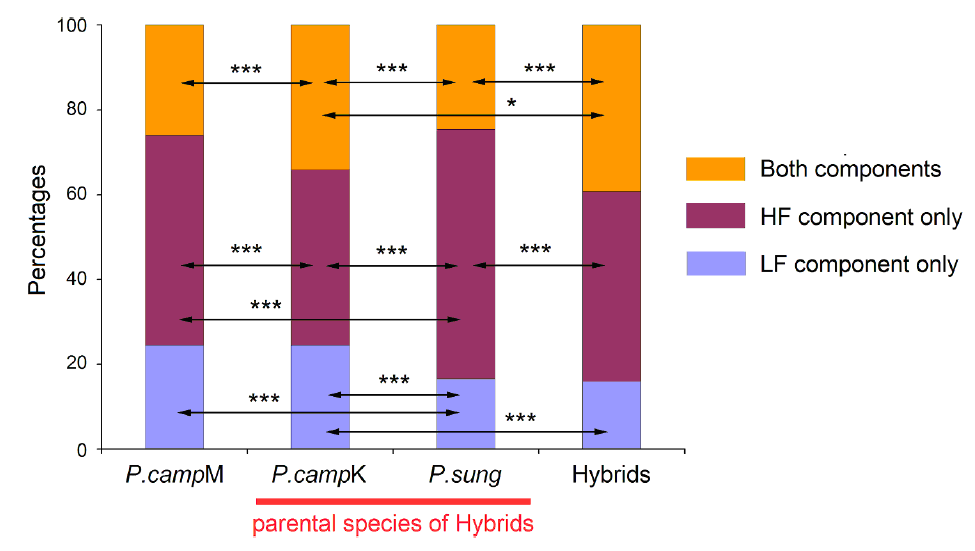
Parameters such as duration and peak frequency were used to describe sounds and make intergroup comparisons. According to these characteristics, the calls of hybrids differed sharply from those of the young of the parent species - in hybrids, low-frequency calls were shorter and characterized by a lower frequency than in both parent forms, while high-frequency calls were longer, and the peak frequency was lower than in one of the parent species - Djungarian hamster (Fig. 3,4).
It should be noted that the low-frequency signals of the pups of the two lines of Campbell's hamster differed significantly in both duration and peak frequency (Fig. 3).
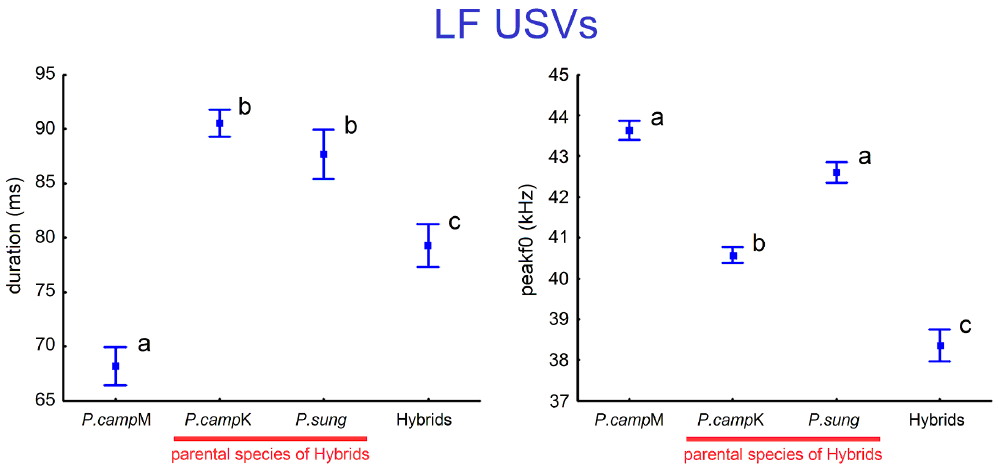
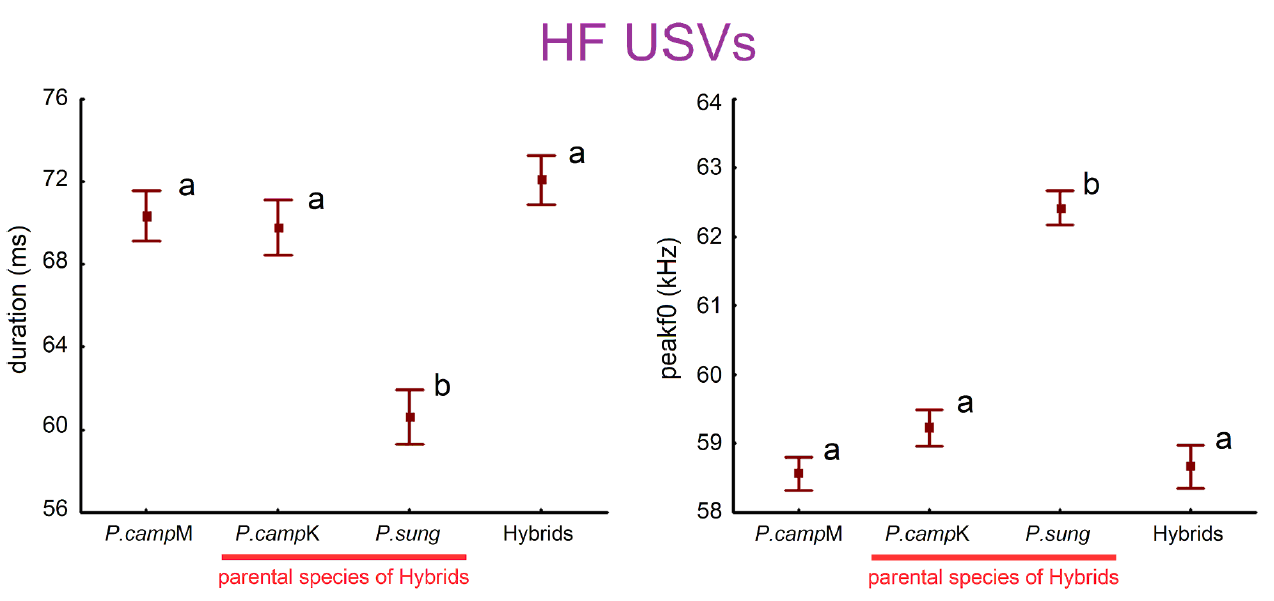
It was shown for the first time that for the whistling calls of mammals, the fundamental frequency of calls of interspecific hybrids can have values that lie far beyond the frequency range of the parent species. In the context of the known genetic determination of vocalization in rodents, this is an interesting result that raises many new questions for further research into the mechanisms of inheritance of the ability to vocalize.
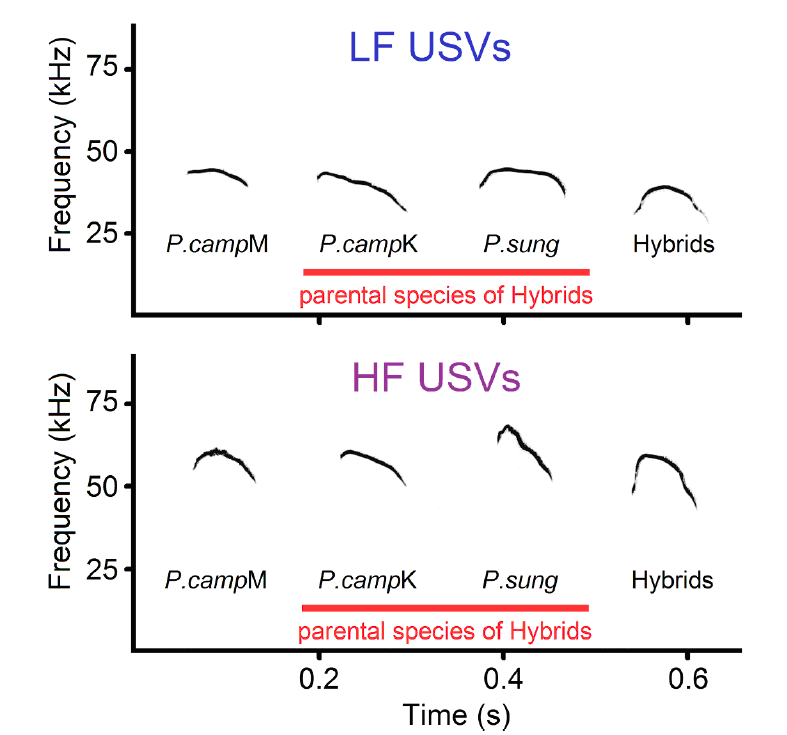
The study was published in the Elsevier journal Behavioral Processes.
Semen V. Piastolov, Ilya A. Volodin, Nina Yu. Vasilieva, Anastasia M. Khrushchova, Olga N. Shekarova, Elena V. Volodina. Comparison of ultrasonic isolation calls of pure-breeding and interspecies hybrid Phodopus dwarf hamster pups // Behavioural Processes, 2023, v. 210, 104917 https://doi.org/10.1016/j.beproc.2023.104917
